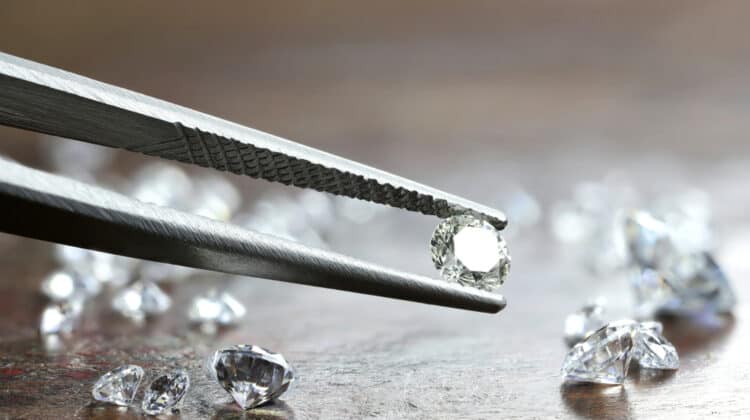
Snowshoeing was not always a fun winter sport, as it was originally a necessary mode of transportation.
Going for a long walk in the snow is beautiful, but it will be difficult and leave your feet a mess.
Snowshoes can keep you above the snow and better able to traverse the terrain and enjoy the beauty of it all.
However, you will need a good amount of snow to be able to snowshoe.
Here is everything you need to know about snowshoeing and what it takes to get through the woods on a day when the ground is covered with snow.
How Much Snow Is Needed to Snowshoe?

To snowshoe, you should have at least seven inches of snow.
Snowshoeing in lesser amounts of snow is going to cause damage to your equipment.
If you snowshoe on a trail that is covered with less than six inches of snow, you may do damage to the trail as well.
If you are not sure if the snow is deep enough to snowshoe, don’t try it out.
Always make sure there is plenty of snow before you head out to the trails.
There are a few other things you should keep in mind in addition to the depth of the snow.
Snowshoeing is a fun sport and great exercise, but it is smart to stay informed.
Tips for Snowshoeing

If you live in a colder climate and spend the winter months staring at a blanket of white snow, snowshoeing is a very good thing to get involved in.
One of the best things about taking up snowshoeing is that it is not an expensive sport.
You will need a few pieces of equipment and gear, and many trails are free.
When you calculate all of the costs, it is undoubtedly going to be less money than other winter sports like snowboarding and skiing.
Here are some tips to make sure your snowshoeing experience is the best it can be.
1. Rent First

Snowshoeing can be a lot of fun, and chances are you are going to really enjoy the experience.
However, if you have never been snowshoeing before, you may want to rent some equipment before you buy.
You can easily rent some snowshoes for a day and see how you feel with them on.
Some people will find that there is more skill involved in snowshoeing than they had initially thought.
When you start walking through the woods, you will have to use different muscles, especially when you are going up or down a hill.
Renting first is essential because it also helps you know what you may need to purchase when you do decide to get your own equipment.
There are so many brands and styles out there.
Just like any other sport, snowshoeing companies have flooded the market with options to try.
Give yourself some time and some trials before you decide on your final snowshoe option.
2. Warm-Up

It is important to remember that snowshoeing is a physically demanding activity.
If you don’t warm up first to make sure that your muscles are ready, you will end up pulling a muscle or straining yourself.
Before you head out to go snowshoeing, make sure that you have stretched your muscles.
It is smart to stretch out your legs, hip, and your back as well.
The last thing you will want to happen is to experience an injury when you are out in the woods.
3. Use a Pole

It is important to use poles when you go snowshoeing.
The poles you use can be a variety of types.
For instance, ski poles and trekking poles are going to work as well as snowshoe poles.
The snowshoe poles will do a great job of taking some of the strain off of your body as you climb up a hill.
The poles can also help you get some more balance as you head down a hill.
A pole is going to help you for quite some time as they don’t usually break or wear out unless they are treated poorly.
If you are serious about snowshoeing and plan to do it often, we would recommend investing in a pole.
4. Take a Class

Depending on where you are snowshoeing and how remote the area is, there are some safety precautions you will need to follow.
Sometimes taking a class can be your smartest option.
When you take a local snowshoeing class, they can help you learn everything you need to know about the local area.
You will learn where the trails are, some potential survival tips, and even techniques for improving your snowshoeing skills.
A snowshoe class should not be all that expensive, but you will likely get a good amount of value out of the class.
You can also ask the instructor questions that you may have about the snowshoe process.
Overall, taking a class is an experience that will only help you become better at the sport.
5. Remember to Pack Water

Although you don’t want to load yourself up with heavy equipment when you go snowshoeing, it is essential to bring water with you.
Even though you will be out in the cold and in the snow, you will still need to stay hydrated.
If you do not drink the right amount of water, you are going to end up being thirsty, resulting in a headache, and you could potentially get disoriented as well.
This is a common problem you will see snowshoers run into and one you will want to avoid.
Lots of backpacks have places where you can store water bottles and even connect them to a straw to remind you to drink while you are exploring.
6. Proper Attire

Your attire when snowshoeing is going to be just as important as the shoes on your feet.
You will probably want to bring some extra socks, hand warmers, gloves, and maybe even a change of clothes.
Although you will mostly stay above the snow, you can expect that you are going to get quite wet when you are snowshoeing.
Having the proper gear and materials that will keep you warm and dry is essential.
It may take some time and experience to get the exact snow snowshoeing equipment that will work for you.
Chances are, you will end up with your favorite socks, hats, pants, and more.
Give yourself time to sample different brands and materials, and eventually, you will find the perfect fit.
7. Learn the Rules

Although snowshoeing is all about exploring the outdoors and getting time to be free in nature, there are still rules.
Overall, the rules are quite simple for snowshoers.
The only thing you must be aware of is the tracks that the cross-country skiers have created.
If snowshoer steps in these tracks, it will damage the track and cause some cross-country skiers to get very unhappy.
Usually, trails are wide enough that there is plenty of room for both snowshoers and cross-country skiers.
If you find that you have no room to walk with the way the trails are in place, then you should look for alternative trails.
When you damage a cross-country trail, it is going to be nearly impossible to fix it.
Most snowshoers know this rule, and they will not want to do anything to ruin the experience for anyone else.
The majority of the time, these mistakes are made by people who are new to snowshoeing and just don’t know the rules.
However, if you take one of those beginner classes we mentioned earlier, they will probably give you the information you need to make sure that the rules are properly followed.
Overall, snowshoeing is intended to be a social and fun experience.
You will be able to spend time in nature and with your friends as well.
Making sure you are prepared will make the experience all that much more fun.
Conclusion
As you can see, the snowshoeing experience can be a great one.
If you have enough snow, you should certainly give snowshoeing a try.
Remember that it does not make sense to push it when the snow is not all that deep.
If you snowshoe in the snow that is too shallow, you may do damage to your shoes.
In addition, if you snowshoe in the snow that is too deep, you could be setting yourself up for injury.
Make sure you understand what you are doing before you head out to snowshoe.
NEXT: How Much Snow Is Needed To Go Sledding? (Full Breakdown)























